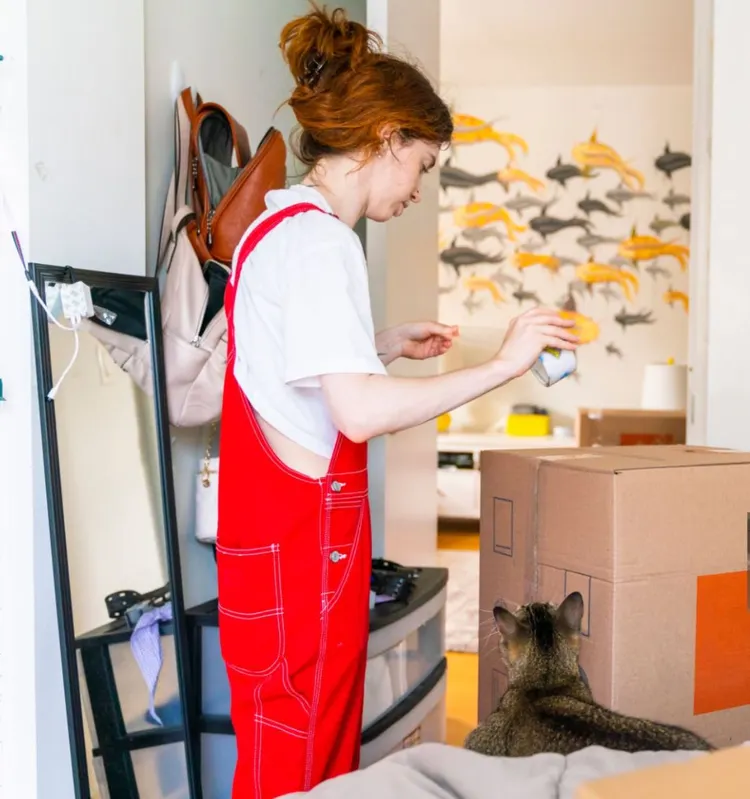Rehoming a beloved pet is never an easy decision. Whether due to lifestyle changes, allergies, financial issues, or unexpected circumstances, the idea of finding a new home for your cat can feel overwhelming. However, with care, thoughtfulness, and a well-planned approach, you can ensure that your cat transitions smoothly to a new loving environment. This guide is here to help you navigate the emotional and practical aspects of rehoming your cat, with advice on how to do so responsibly, ethically, and in an eco-friendly way.
Reasons People May Rehome a Cat
It’s important to recognize that many cat owners who face the difficult decision to rehome their pets do so out of necessity rather than desire. Some common reasons for rehoming include:
- Allergies: Allergies to cats can develop over time or worsen with a change in family dynamics, such as the arrival of a new baby or another family member moving in.
- Financial Strain: The cost of food, vet bills, and other expenses can become overwhelming, especially in times of financial hardship.
- Behavioral Issues: Sometimes, a cat’s behavioral challenges—such as aggression, anxiety, or litter box problems—may prove too difficult to manage in a particular household.
- Moving: A change in housing, whether due to relocation or downsizing, can make it difficult to keep a cat, especially if you’re moving to a place that doesn’t allow pets.
- Lifestyle Changes: Major life events such as divorce, illness, or a change in work schedules can make it impossible to provide the care and attention a cat needs.
- New Family Members: The addition of a baby, partner, or other pets can lead to conflict or competition, making it difficult for the cat to adapt to new dynamics.
If you find yourself in one of these situations, it’s essential to prioritize your cat’s well-being while looking for a suitable new home.
Responsible Rehoming
Rehoming a cat should be done with thought and compassion. Finding the right home takes time and effort, but it’s crucial for ensuring the safety and happiness of your pet.
1. Explore All Options
Before rehoming, ask yourself if you’ve exhausted all possible alternatives. Would behavior modification, financial assistance for vet bills, or temporarily fostering your cat be an option? There are many organizations and resources that can help cat owners in difficult situations. If rehoming is truly your best choice, proceed thoughtfully.
2. Shelters and Adoption Groups
When looking to rehome a cat, consider reputable shelters and rescue groups. These organizations specialize in finding cats new homes and often have established procedures to ensure the pet’s safety. Be sure to research the shelter’s policies and choose one that operates ethically and provides a nurturing environment.
- No-Kill Shelters: These shelters do not euthanize healthy cats and are committed to finding homes for all animals in their care.
- Cat-Specific Rescues: Specialized rescues that focus on cats can provide expert advice and resources for rehoming, and they often have extensive networks of potential adopters.
3. Friends and Family
Sometimes, the best place for your cat may be with someone you already know. Talk to trusted friends, family members, or co-workers who might be willing and able to take your cat. People within your network are often more likely to provide a smooth transition for your pet since you already know their home environment.
4. Screening Potential Owners
Whether rehoming through a shelter or finding a home independently, it’s essential to screen potential new owners carefully. Conduct interviews and, if possible, home visits to ensure the cat’s new environment will be safe and loving. Here are a few important questions to ask potential adopters:
- Do you have experience caring for cats?
- Are there any other pets in the home? How do they interact with cats?
- Do you have a vet, and are you prepared for regular veterinary expenses?
- How will you handle behavioral issues if they arise?
A good match ensures that your cat is going to a permanent and loving home.

The Rehoming Process: A Step-by-Step Guide
1. Create a Pet Profile
Provide potential adopters with as much information as possible about your cat. A detailed pet profile should include:
- Age, breed, and medical history: Include vaccinations, spay/neuter status, and any known medical conditions.
- Personality traits: Is your cat shy, outgoing, or a bit of both? Mention their likes, dislikes, and quirks.
- Daily routine: Describe your cat’s typical day, including feeding schedule, playtime, and litter box habits.
This information helps adopters understand your cat’s needs and temperament, allowing them to make an informed decision.
2. Advertise Responsibly
Once you’ve written the pet profile, use a variety of channels to spread the word about your cat’s availability for rehoming. Avoid traditional paper flyers and instead opt for eco-friendly digital platforms, such as:
- Pet adoption websites: Sites like Adopt-a-Pet, Petfinder, and Rescue Me allow you to create listings for your pet, reaching a wider audience of potential adopters.
- Social media: Use Facebook, Instagram, and community groups to share information about your cat. Be mindful of privacy and only share details with reputable contacts.
- Vet clinics and pet stores: Ask local veterinary offices or eco-friendly pet supply stores if they have an online bulletin board where you can post your cat’s profile.
3. Documentation
Ensure that all necessary paperwork is ready before the transition. This includes:
- Veterinary records: Provide up-to-date medical records, including vaccinations, spay/neuter certificates, and any medications your cat might need.
- Microchip information: If your cat is microchipped, make sure to transfer ownership details to the new owner.
- Personal items: Pack a small bag with familiar items, such as their favorite toys, blanket, or bed. These items can help comfort your cat in the new home.
Preparing Your Cat for Rehoming
Your cat’s emotional well-being is a top priority during this process. Cats are creatures of habit, and a sudden change in their environment can cause stress. Here are a few tips to make the transition smoother for your feline friend:
- Keep Them in a Familiar Environment: If possible, have the new owner visit your home first. This allows the cat to meet them in a familiar space before the move.
- Comfort Items: Send your cat to the new home with a few comforting items like a blanket or a favorite toy that smells like their previous environment. These can help them adjust to the new surroundings.
- Maintain Routine: Encourage the new owner to stick to your cat’s existing routine, especially in the first few weeks. Familiar feeding times, playtimes, and sleeping arrangements can ease the transition.

Eco-Friendly Considerations for Rehoming
As an eco-conscious pet owner, you can take steps to make the rehoming process more sustainable:
1. Go Digital
Instead of using paper flyers to advertise your cat, opt for online platforms and social media. Many adoption websites allow you to list pets for free, which reduces the need for physical advertising and saves resources.
2. Donate Old Supplies
If the new owner already has supplies for the cat, donate any unneeded items to shelters or pet rescues. Toys, beds, scratching posts, and bowls that are still in good condition can be repurposed and benefit another animal in need.
3. Rehome Locally
By finding a home within your local community, you can minimize the environmental impact of long-distance travel. Additionally, this allows for easier follow-ups and potentially visiting your cat in the future.
Post-Rehoming Support
Even after your cat has moved to a new home, offering post-rehoming support can make the transition smoother for both the new owner and your pet.
- Share Advice: Provide detailed information about your cat’s behavior, preferences, and any special needs. This helps the new owner care for your cat more effectively.
- Check-in: A follow-up call or message a few days after the rehoming can help reassure you that your cat is settling in. It also gives the new owner a chance to ask questions.
- Stay Open to Updates: Some new owners may welcome periodic updates on how the cat is doing, which can give you peace of mind knowing that your pet is happy and healthy.
Conclusion
Rehoming a cat is a difficult decision, but it can be a responsible and positive experience when handled with care. By taking the time to find the right home, creating a smooth transition, and offering support after the adoption, you can ensure your cat moves on to a loving, permanent home. While rehoming should always be a last resort, when done thoughtfully, it can provide your cat with a new family that offers the care and attention they deserve.



